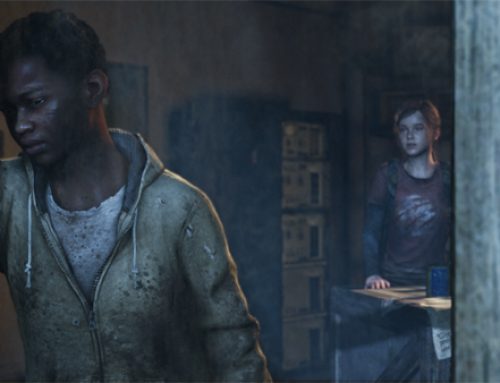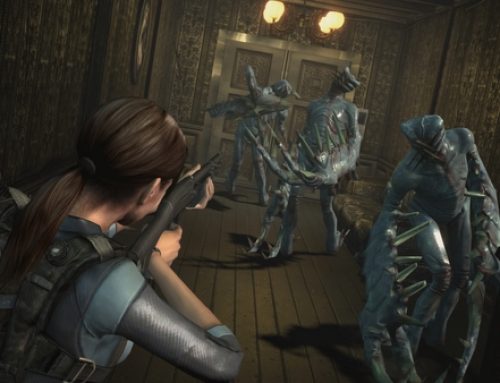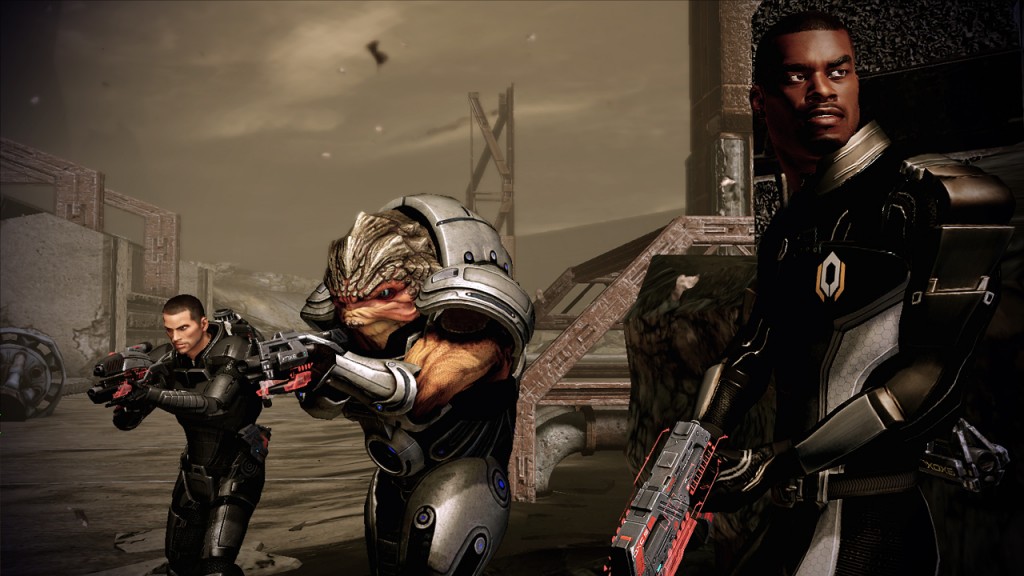
When I was about halfway through playing “Mass Effect 2,” my wife and I went to see James Cameron’s “Avatar.” As I sat in the theater, wearing my 3-D glasses, I couldn’t help but think how much more immersive and emotionally stirring the sci-fi video game sitting in the tray of my Xbox 360 was compared to the big-budget, Hollywood spectacle in front of me.
In general, the quality of storytelling in video games has a ways to go before the medium’s best can rival even an average movie. But sci-fi might be the genre in which games have narrowed the gap the most. The “Mass Effect” trilogy may very well close it for good.
Despite some flaws, BioWare’s latest is the second installment in a trilogy that may go down as gaming’s greatest story. Its incorporation of data from players who’ve completed 2007’s “Mass Effect” forces players to own the decisions they made in the first game and implies “Mass Effect 3” will do the same. This helps make it the first sequel I’ve played that feels like a natural next step in a narrative I helped create. At this point, I’m invested until the bitter end.

DUBIOUS ALLIANCE
“Mass Effect 2” (rated M, $60 on Xbox 360, $50 on PC) continues the story of Commander Shepard, a man or woman with a first name, appearance and background story of your choosing. The game picks up shortly after the end of the first “Mass Effect,” with your team getting ambushed on a mop-up mission. In the opening sequence, Shepard’s ship, the Normandy, is destroyed, and the commander is killed.
The game resumes two years later, with Cerberus, a villainous organization on the periphery of the first game, having literally brought Shepard back from the dead. The group and its mysterious leader, voiced perfectly by Martin Sheen, want Shepard to investigate the disappearances of entire human colonies. Naturally, requiring that Shepard work closely with a group he likely fought in the first game creates some fantastic tension and serves to remind us that, even in a game that’s all about choice and free will, we’re still all pawns of the developers.
Killing Shepard was a neat move by BioWare, as it gets around the issue of letting those of us who played the first game start the second with our souped-up, maxed out, Level 60 heroes. It looks as if BioWare is planning better for “Mass Effect 3,” though, as the level cap in the new game is 30.
As with all BioWare games, “Mass Effect 2’s” main draw is its well-crafted game world, compelling characters and branching dialogue system that lets you play as either a paragon of humanity or a go-it-alone renegade. But there are a few differences this time out.
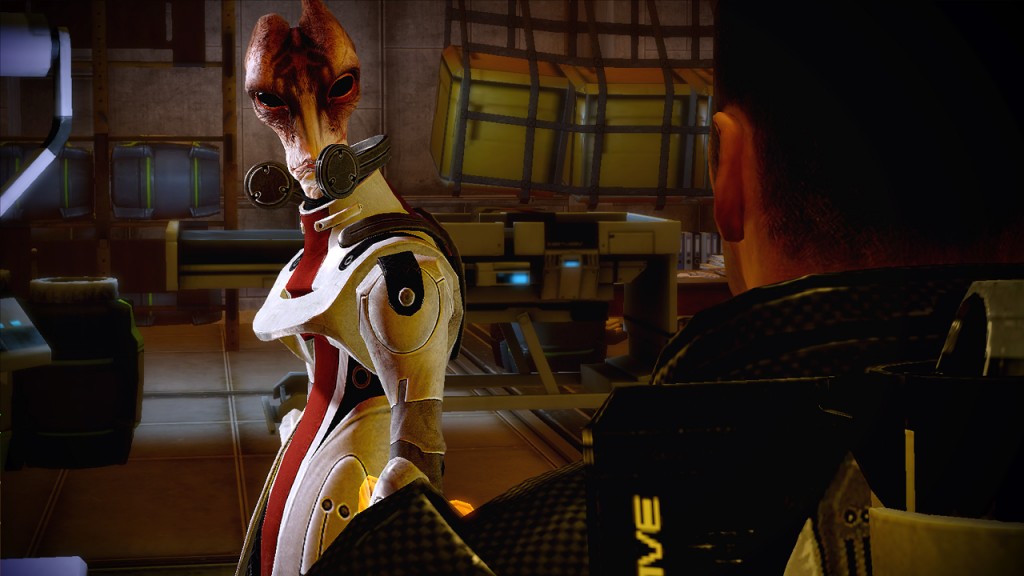
TEAM-BUILDING EXERCISE
Where the first “Mass Effect” featured a team of Shepard and six companions, the way the game structured its achievements encouraged you to pick two sidekicks and stick with them throughout the game. In the sequel, you’ll recruit a maximum of 11 companions before heading off on what the game calls a suicide mission. To increase your chances of survival, you’re encouraged to win each companion’s loyalty by helping him or her complete some task of personal importance. Even though you still only travel with two companions at a time, each one will star in at least one mission. (Thankfully, there are no, “Complete the majority of the game with _____ as your companion,” achievements this time out.)
Even though the loyalty missions have relatively low stakes compared with the save-humanity angle prevalent late in the game, they feature some of video gaming’s most emotionally engaging moments. While these quests don’t all resonate equally, you’ll gain valuable insight into what makes the game’s supporting cast tick, sharing in their sorrows, triumphs and catharses. The fact that every major character is fantastically acted, including a fairly substantial role from Martin Sheen, adds weight to every agonizingly tough choice you make.
GAMEPLAY QUIBBLES
Like a lot of games with fantastically written stories, “Mass Effect 2” suffers a little bit in the gameplay department. It’s clear BioWare listened to critics of the first “Mass Effect” when it crafted the sequel. For the most part, these adjustments have resulted in a better game, but the studio went too far in some instances and introduced new problems in others.
For example, “Mass Effect” featured enough different types of guns, armor and upgrades to make Ted Nugent blush. And they were everywhere – on dead bodies, in boxes and even in the wreckage of crashed satellites you found lying on abandoned planets. (Really? Humanity sent a probe into space, and they decided to send a sniper rifle along for the ride?) The game felt like what dating must feel like for the world’s most shallow celebrities, a vicious cycle of comparing and upgrading.
For the sequel, this has been largely stripped out. You’ll find a few new weapons with vague, stats-free descriptions that often make it difficult to discern which shotgun you should be using. But in a lot of ways, it’s oversimplified. “Mass Effect 2” is a role-playing game, but the streamlined weapon selection makes it feel more like a squad-based first-person shooter. The ability to swap between weapon upgrades in the first “Mass Effect” helped tailor players’ arsenals to our tactics. Here, we’re all using essentially the same weapon set. Hardcore role-playing game junkies, i.e., the folks who flock to BioWare games in droves, still want some customization.
Another big beef people had with the first “Mass Effect” was its boring, repetitive side missions, at least a few of which were semi-necessary for the sake of leveling up your character. In that game, you hopped into the Mako, a moon buggy-like vehicle used to explore uncharted planets. But it didn’t take long to realize that, with a few exceptions, these out-of-the-way worlds were essentially the same barren wasteland dotted by a couple of crashed probes or stray buildings, with slightly different topography, a differently colored sky and, if you were lucky, a few plants and animals. All contained between two and six areas of interest, most of which were terminally dull.
In “Mass Effect 2,” you won’t be landing on most of these worlds. Instead, you’ll take part in a minigame that lets you scan the planet’s surface for valuable resources, needed to upgrade your ship and weapons, as well as to unlock new abilities. It actually ends up being more dull than driving around in the Mako. I play dozens of video games a year, yet my wrists and hands rarely tire. Having to hold down the left trigger for minutes on end as my controller pulsed and rumbled while I moved a cursor around a globe wore me out. Sorry, BioWare; video games shouldn’t hurt.
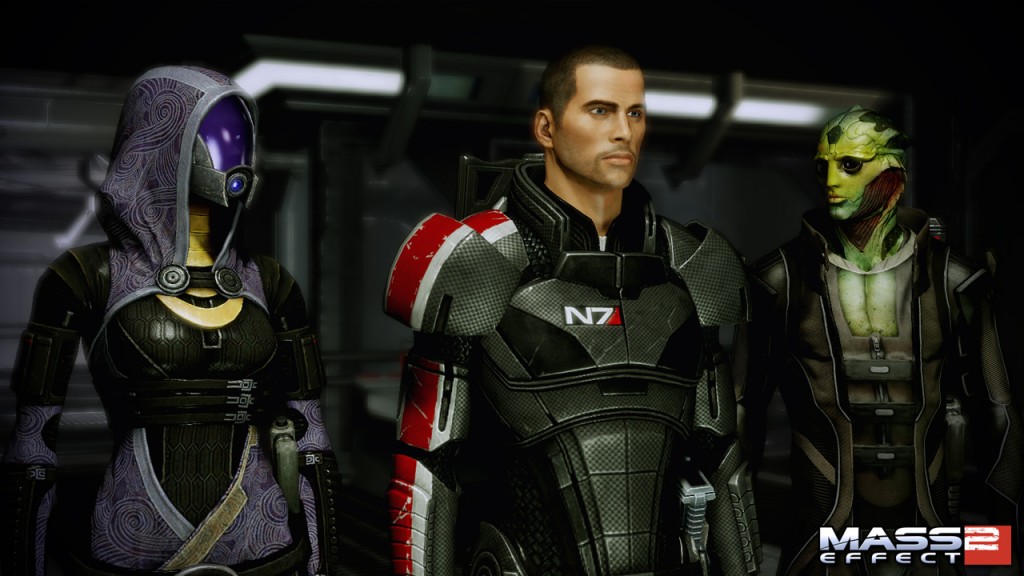
STILL A FANTASTIC EXPERIENCE
That’s not to say “Mass Effect 2” isn’t a better game than its predecessor. It is. The characters and facial animations look fantastic, making the people you converse with feel nuanced and real. Likewise, the action feels a lot more fluid. I went back and played the first “Mass Effect” and was startled by how much the screen stuttered as Commander Shepard ran around. The overhauled combat, particularly the shoot-from-cover mechanic feels intuitive and easy to grasp.
When I was about halfway through “Mass Effect 2,” my wife and I went to see James Cameron’s “Avatar.” As I sat in the Sundance Kabuki, wearing my 3-D glasses, I couldn’t help but think about how much more immersive and moving the sci-fi video game sitting in the tray of my Xbox 360 was compared to the polished, big-budget, Hollywood spectacle in front of me. In general, the quality of storytelling in video games has a ways to go before it can rival even average films, but sci-fi might be the genre in which games have narrowed the gap the most. The “Mass Effect” trilogy may very well close it for good.
My response upon finishing “Mass Effect 2” was not to start over with a new character, but to dust off my copy of the first “Mass Effect” to restart the two-game story arc from scratch. Once the trilogy is complete, I could very well see nostalgic gamers playing through the entire trilogy, one game after another, the way “Star Wars” nuts watch the original trilogy, from start to finish, on a rainy Sunday afternoon.

